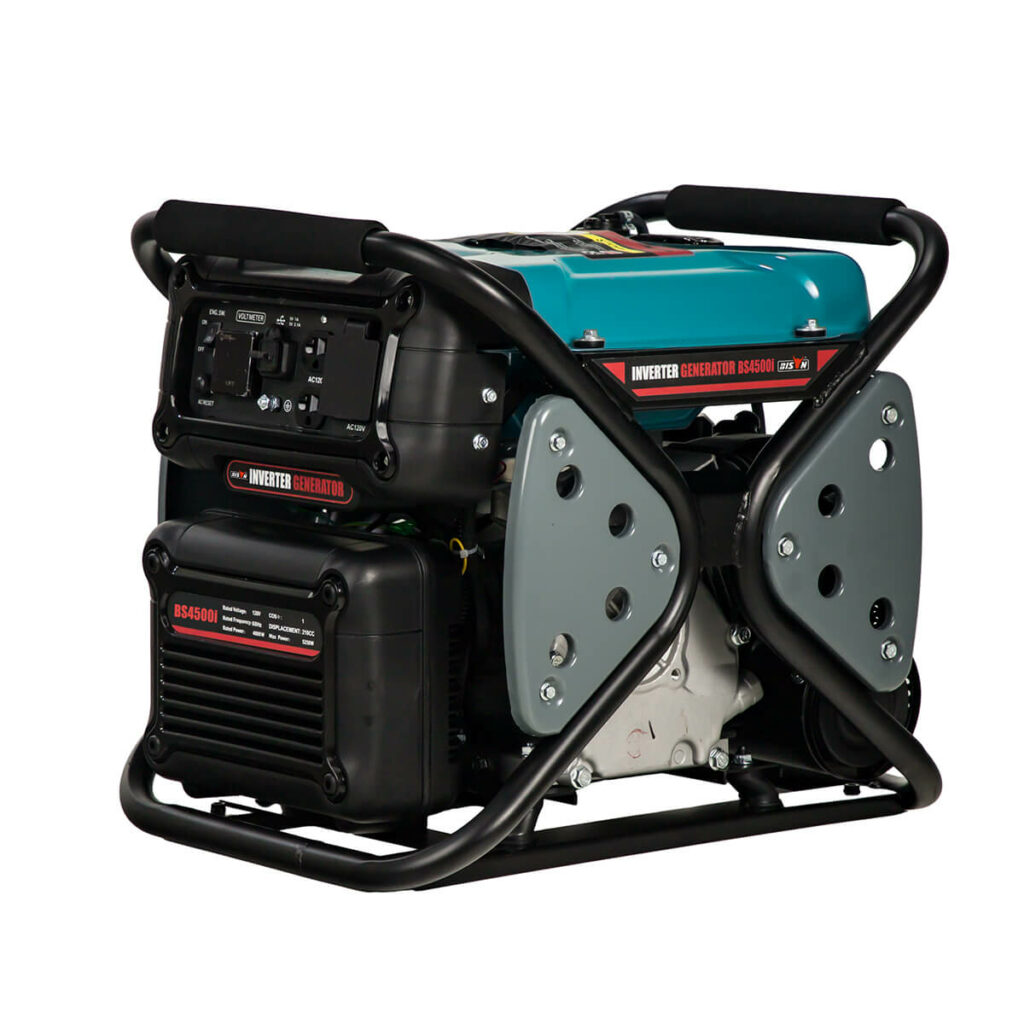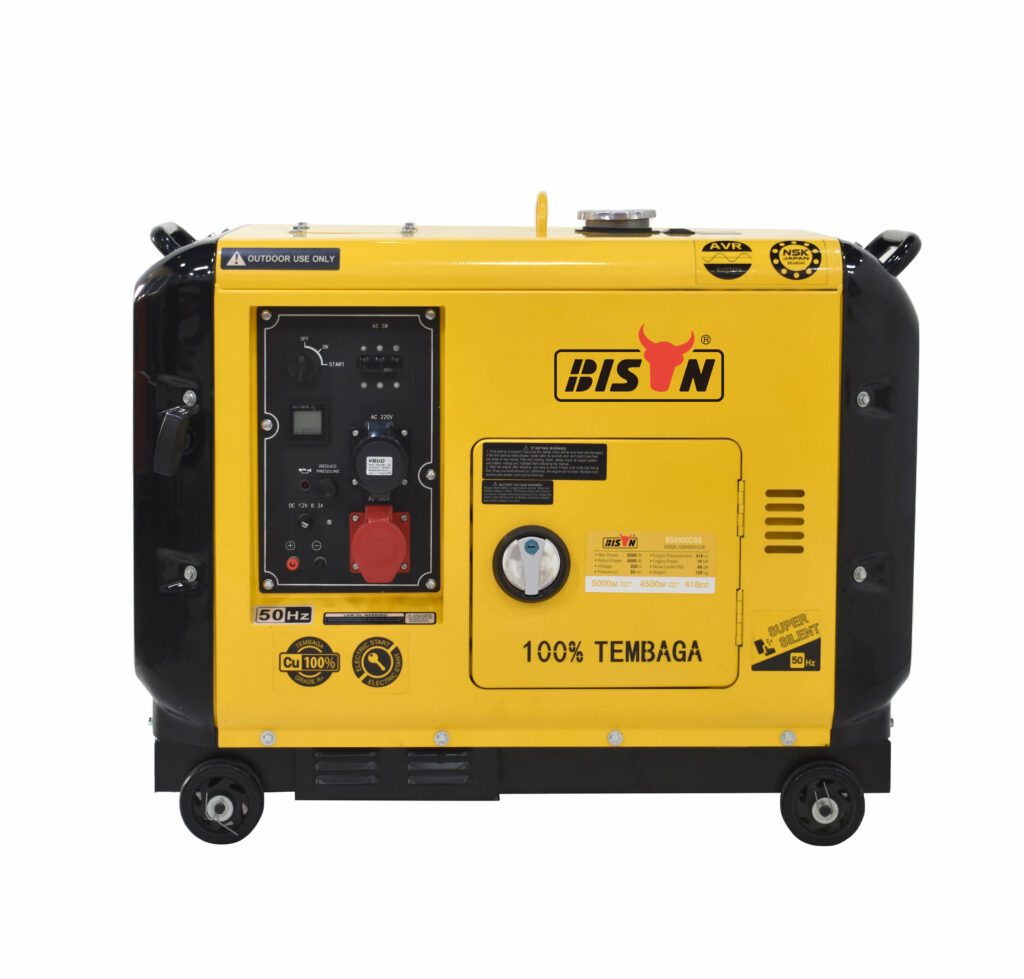Open Frame Vs Closed Frame Generators
- BY BISON
Table of Contents
If you’re looking for a new generator, you’ve certainly noticed there are countless variations available: portable, standby, standard, inverter, open frame, closed frame, dual fuel, and more. It’s easy to become lost in all the terminology. Fortunately, professionals at BISON can help you out.
Among the available types, open frame generators and closed frame generators are one of the most prominent choices faced by consumers today. Both types of generators provide quieter, cleaner power compared to conventional generators. So, what’s the difference between open-frame and closed-frame generators? Next, BISON will introduce these two types of generators and the difference between them.

Open frame generators
Open generators are the most common solution on the market. They have two significant advantages: low cost and quick access to internal components. The open design consists of a solid metal frame welded from hollow metal tubes. Its main task is to secure the motor and alternator, preventing them from loosening during work.
The frame is also used as a transport handle for low-power models. It can be fixed to the floor with suitable metal brackets – this will ensure the generator’s high degree of stability, even when working under maximum load.
Advantages of open frame generators
Open enclosure design
Open enclosure design provides unobstructed access to key plant components for quick equipment maintenance. In addition, no obstacles are created for effective heat dissipation, almost eliminating overheating.
Low-cost
Simple design and no need for additional enclosures make open frame models more affordable than closed-frame models. The unrestricted airflow around the engine and components of an open generator improves cooling efficiency, simplifies access for maintenance and repair, and reduces manufacturing costs and sales prices.
Lighter weight
Available in a lighter design version. These generators are generally more compact and lightweight compared to their closed-frame counterparts of similar power output, making them easier to transport despite their often rugged construction. This indicator is especially important for low-power models, which are often carried by hand, such as in country houses, mobile outlets, etc.
Disadvantages of open frame generators
High noise
No additional noise protection. There is significant acoustic discomfort when operating near people or for long periods at night.
Fragility of components
Despite the metal frame, the unit, alternator, and other components are not protected from all kinds of mechanical damage. Also, since high humidity from precipitation can negatively affect the device, it should not be run under open skies for extended periods of time.


Closed frame generators
Closed frame generators are enclosed in soundproof enclosures and are also common on the market. In simple terms, it is a power generation device of a fully enclosed design, where all internal components (including the engine, alternator, and control system) are enclosed in a protective housing or casing. But they are a more powerful solution with a complete set of features and advantages compared to open frame generators. A significant advantage is that the noise level is reduced by 15-20 decibels, which significantly improves the acoustic performance of the device during operation.
The main difference between an enclosed generator and an open generator is the presence of a casing. It is made in the form of a solid perforated metal structure with several layers of soundproofing material inside. The type and number of layers of sound-absorbing material directly depend on the generator’s manufacturer and model. Generally, the more expensive the model, the higher the quality of the enclosure and the more soundproofing.
Advantages of closed frame generators
Quiet operation
The high-quality soundproof enclosure reduces noise levels by 15-20 dB and, in some cases, 30dB. They are ideal for use in residential premises: summer houses, private houses, villas, etc. The noise level of low-power devices is only 40 decibels, which is comparable to that of ordinary washing machines.
Alternator and motor protection
Frames serve as additional protection for internal components from mechanical damage.
Longer lifetime
Not only from mechanical damage but also from moisture, dust, and wind due to higher protection of internal components.
Disadvantages of closed frame generators
High cost
Due to the presence of additional housing elements, closed frame generators will cost more than open units.
Possibility of overheating
Additional sound insulation automatically reduces the cooling quality of the device. If not appropriately operated or maintained on time, the generator can overheat, leading to unpleasant consequences until it fails.
Comparison: Open frame vs. closed frame generators
Design and structure
Open frame generators feature an exposed skeleton structure, a minimalist design that focuses on functionality over aesthetics, with components clearly visible and easy to access. In contrast, closed frame generators feature a fully encapsulated housing made of metal, plastic, or composite materials, giving them a more refined, sleeker appearance.
Structurally, open frame models prioritize simplicity and ease of use, while closed models feature additional layers of material, insulation and carefully designed airflow channels. These fundamental structural differences not only affect appearance, but also lead to differences in functional characteristics, maintenance methods, and applicable applications.


Noise levels
The main difference between open and closed inverter generators is noise. Closed-frame generators will run quieter than their open-frame counterparts.
A closed-frame inverter generator usually produces about 57 decibels (dBA), while a similarly sized open-frame generator produces about 67 dBA.
These differences have substantial practical implications for usage environments: open frame generators are generally restricted to industrial settings, construction sites, or outdoor locations where noise concerns are minimal, while closed frame generators can be operated in residential areas, campsites, recreational settings, and other noise-sensitive environments without causing significant disturbance to occupants or neighbors.
Weight and portability
Open frame generators are substantially lighter, typically weighing 30-50% less than their closed frame counterparts of equivalent power output. This weight difference stems from the closed frame’s additional housing materials, insulation, and structural reinforcement.
This also makes open frame generators more suitable for applications that require frequent relocation, and operation in remote areas or in space-constrained environments, while closed frame models are more suitable for semi-permanent installations or when the generator is stationary for a long time.
Weatherproofing and durability
The comprehensive protection provided by closed frame generators significantly reduces the risk of corrosion and extends component life, especially for sensitive electronic components and connections.
Open frame generators offer limited inherent weatherproofing, and exposed components are directly affected by environmental conditions. While many open frame generators feature weatherproof materials and protective coatings, additional aftermarket shields or covers are often required in severe weather, and prolonged exposure to moisture can accelerate corrosion and component degradation.
As a result, closed frame generators typically last 20-30% longer with equivalent usage patterns.
Cooling and ventilation
Open generators use natural convection cooling, where ambient air circulates freely and unrestricted around all components. This passive approach allows heat to dissipate directly into the surrounding environment, eliminating the need for complex systems for efficient cooling.
Enclosed generators compensate for their enclosed structure with carefully designed forced air cooling systems. These systems incorporate strategically placed air inlets exhaust vents, and internal baffles to direct airflow, and are often equipped with temperature-controlled cooling fans that adjust based on internal thermal conditions.
Engine access
An open-frame generator is like a traditional one because the body design exposes the engine. This makes maintenance more manageable as the engine is more accessible.
The closed frame completely encloses the engine. It better protects the unit from external forces like dust and wind. Furthermore, this design difference is the main reason for the difference in noise levels between the two styles.
Price point
In general, closed-frame inverters tend to run on the higher-cost side. If you’re on a tighter budget but still want a generator’s clean, low THD power, an open-frame model might be the way to go. However, if you plan to use the generator for hunting, camping, or any other application that requires low noise levels, it may be worth spending a little extra on a model with a closed frame.
Conclusion: Open frame vs. closed frame generators
In the end, your demands will determine which generator is best for you, including the type of equipment you want to power, how much power you need, acceptable noise levels, and more. Simply put, if your primary considerations include portability, low cost, or use in an industrial environment where noise is not a major consideration, consider a BISON open frame generator. If you are operating in a noise-sensitive environment, and need protection from harsh weather, extended service life, or value aesthetics, choose a BISON closed frame generator.
But no matter what you need, BISON manufacturers have the right generator for you. If you need assistance selecting the best generator for your needs, please email [email protected] to talk to our friendly and knowledgeable technical support team.
contact us
related product categories
Get in touch to speak with our experts!







